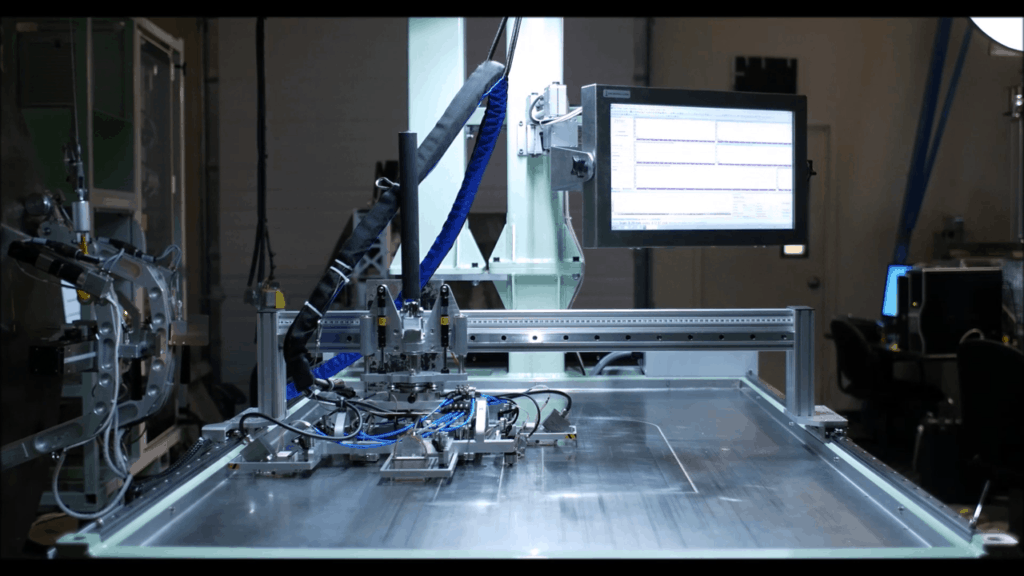Ultrasonic Testing: Calibration Standards and Options

One only needs to look at the size of flaws NDT testing can locate to see why ultrasonic testing calibration is vital. This equipment is highly sensitive and often used in rough conditions—but can still find even the smallest crack or air bubble to prevent asset loss. Calibration is a means of ensuring reliable readings so equipment sensitivity remains high.
Calibration is a central component of NDT equipment maintenance, followed by firmware updates and preventative care. With these three policies in place, companies can extend the life of their equipment and minimize downtime for testing. However, it can be challenging to meet all the needs for ultrasonic calibration and maintenance in-house. In some cases, it’s wise to outsource these tasks to an experienced third party who can keep equipment running at peak performance.
The Basics of Ultrasonic Testing Calibration
A reading is only as good as the accuracy of equipment, making calibration key for any NDT process. Ultrasonic testing calibration specifically centers on verifying measurement accuracy per standards set by ASTM International or another agency. Both vertical and horizontal measurements are taken in most cases using effective calibration tools within an instrument’s software platform and a reference block with known flaws. Reference blocks may also come from computer-simulated models.
Resolution of both the entry surface and far surface, noise sensitivity, and the accuracy of the calibrated gain control are also factors to consider when verifying equipment. When errors can’t be calibrated out, additional measures may be required, as this is indicative of a flaw in the equipment.
Processes for ultrasonic testing calibration can vary widely—as can the effectiveness of those strategies. When establishing a policy for managing these vital tests, it’s essential to review whether a third party or in-house testing is the most viable option both as far as resources and cost-effectiveness go.
Choosing Between In-House and Third-Party Testers
The choice between in-house or third-party ultrasonic testing calibration depends on the size and resources of the company. A smaller company with few employees may not have the expertise on staff to manage calibration. A larger firm, on the other hand, may find it more cost-effective to develop its own in-house team. Anyone considering these options should weigh the pros and cons.
In-House | Third-Party | |
Pros | Long-term cost: Provided the individual responsible for testing stays with the company for the long term, the overall cost savings of having a certified tester in-house could be significant. Speed: The calibration can occur at any time that’s convenient for the company. Control: The company can set their own standards—within regulatory requirements—for their calibration protocols | Expertise: As the third party’s primary job is working with ultrasonic equipment, the technician will have the expertise needed to ensure accurate results. Training access: A third party could provide training to in-house employees to complete calibrations in the future. Certification: A third party can typically provide a Certificate of Calibration to demonstrate traceability in meeting international standards. |
Cons | Training Costs: Training an individual to manage ultrasonic calibration could be expensive, as they must at least be a Level 2 analyst. Potential risk: The analyst may not regularly perform calibration. As such, when it comes time to calibrate, they may be out of practice and make errors. Turnover: When an analyst leaves, the manager will need to find an in-house employee to take their place or hire someone from outside the company who already has a calibration ready skill-set. | Cost: This will be a regular expense required as a budget line item. However, it is possible to limit these expenses by working with a company with a service plan. Time: The calibration will have to be set on the third party’s schedule, so careful planning is required to avoid missing deadlines. Control: The third party will maintain the majority of control over the calibration process, which can be difficult for managers who prefer a more hands-on approach. |
One way to shore up pros and cons within both sides of the calibration decision is to consider leveraging both third-party companies with in-house employees. Having the third party manage the annual inspections and provide training to workers for spot checks helps with flexibility and cost-effectiveness when trying to keep ultrasonic NDT equipment performance high.
Methods for ultrasonic testing calibration can vary widely based on the type of equipment and the analysts using it. One way to obtain consistent, high-quality results is to take advantage of a service contract that provides continuous third party maintenance and calibration of equipment. In some cases, these contracts can even offer provisions for training workers to manage their own calibrations. This is a worthwhile investment, as equipment calibration is a vital part of NDT testing.
Zetec offers ultrasonic testing calibration and maintenance through our aftermarket services. For more information, contact us.

Zetec’s designers are industry-leading experts in ultrasonic and eddy current technologies, and we can help you navigate any of our NDT testing solutions or devices.
